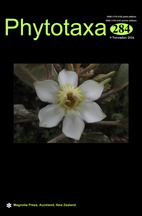Abstract
This paper reports an interesting saprobic ascomycete which was collected and isolated from Equisetum sp. in Italy. The phylogeny of this taxon and genera of Phaeosphaeriaceae are constructed based on analyses of combined LSU, SSU and ITS sequence data. The species has exclusive characters such as ovoid ascomata with minute papilla, cylindrical asci with long acute or knob-like pedicel and fusiform, 4–5-septate, yellowish to pale brown ascospores. Based on phylogeny and morphology we introduce the taxon as a new genus and species within Phaeosphaeriaceae. The new genus and species are introduced with an illustrated account and compared with other taxa in Phaeosphaeriaceae.

